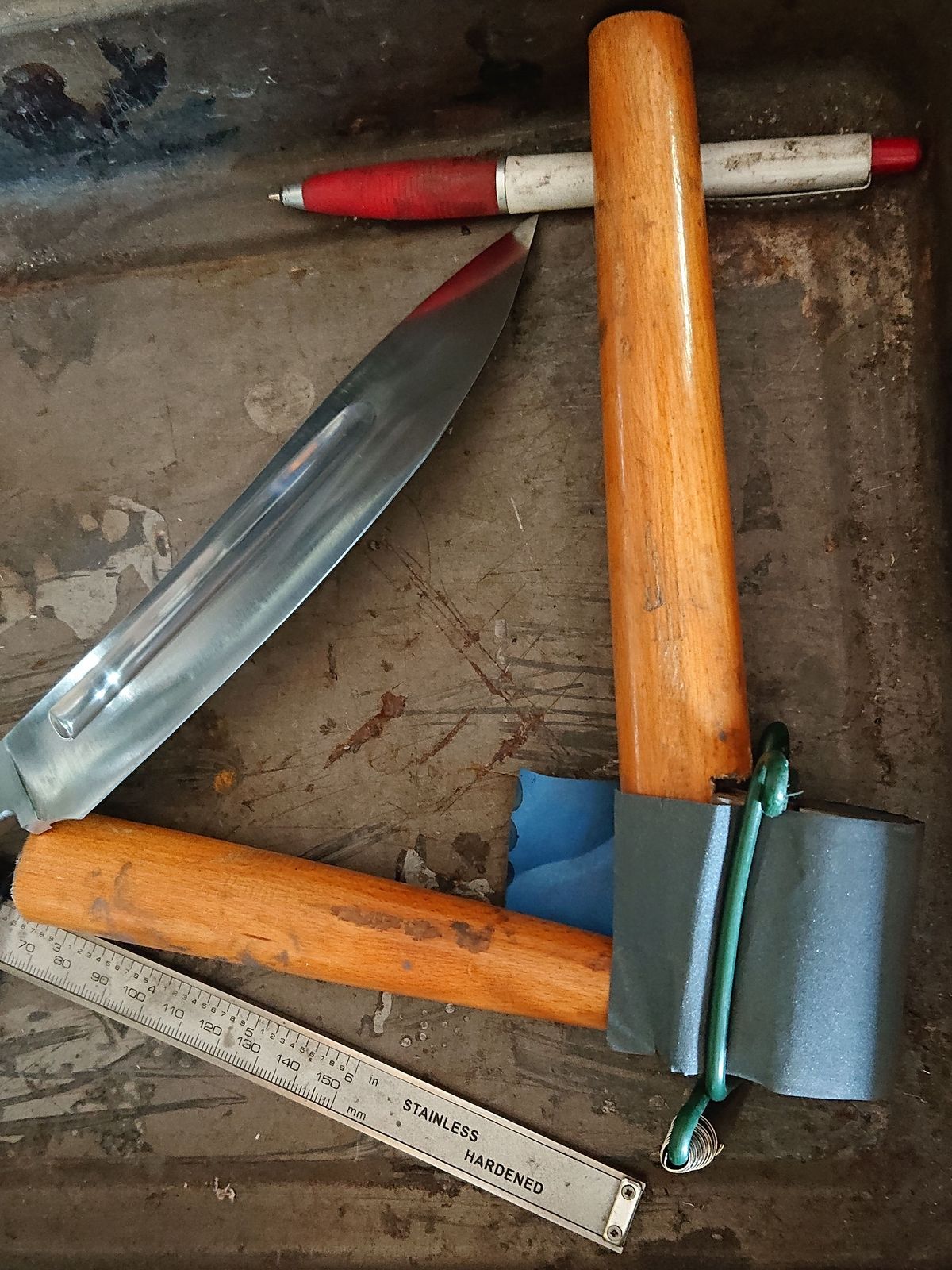I have recovered from the vaccine haze and Christmas laze so today I was able to finish (i.e. sharpen and clean up) five knives. Initially, I have intended to make these with the usual rounded ergonomic handles, but during the work, I have decided to try something a bit different and I have made the handles with a hexagonal profile. With a flat back and belly and ridges somewhere around the middle of each scale. They do feel comfortable enough in the hand and this profile is very safe against the knife twisting in the hand if big force needs to be applied. With a knife, everything is about trade-offs between comfort, safety, costs, and functionality. What a piece of wisdom that surely does not apply anywhere else /s.
The first one is my medium-sized universal knife, with a rounded (or this time “clipped”) tip. The wood is a piece of very uniform birch wood that was pickled in ammonia which gave it a slightly brown color.
The second one has a handle from jatoba, and it is a kinda prototype of the type of knives that I want to make to make use of my jatoba treasure-trove.
Both of these have a bit thicker blades than I ideally want them to have. That makes them very sturdy, but perhaps less ideal for cutting some hard foods. Still should cut about anything with ease.
Of the five finished knives, three are chef knives.
One has again the handle from jatoba. I am very pleased with the handle, not so much with the blade. The curve of the cutting edge did not come out as I wanted it and I was unable to correct it during sharpening without risking destroying the blade.
The same objection applies to a knife with the handle from black locust, with the addition of the blade not having proper taper at all. – I have messed up the grind mightily on this one. Nobody else is probably going to notice it and the knife will be still perfectly functional, but I need to hold myself to a higher standard than that. Anyone can make a perfectly functional knife, it is not that hard.
The third one, with the handle from spalted poplar wood stabilized with honey-color dyed resin, is the closest to what I was aiming for of these three. A broad blade comes to an extremely fine cutting edge, slightly curved to allow for slicing as well as draw-cuts. This is a knife that I have no objections about. Well, except for a slight asymmetry in the handle shape. The asymmetry in coloring is of course due to the used wood and is part of the character,
These knives were supposed to be parts of sets, but I have messed up the numbering, so they will have to make their way in the world solo. I could not make a set of the spalted poplar anyway, I only had two pieces of that wood and I messed one of them up.
These angular ergonomic handles are easier to make than fully rounded ergonomic handles so I will make more of them, especially for cheap-ish knives with handles from jatoba and black locust. The pile of naked blades shrinks, but very slowly. There is still a lot, and I mean a lot of work to do.
































































